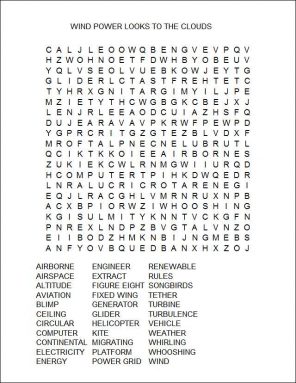Wind power is looking up — to the clouds
Researchers look to the skies in their search for airborne wind power
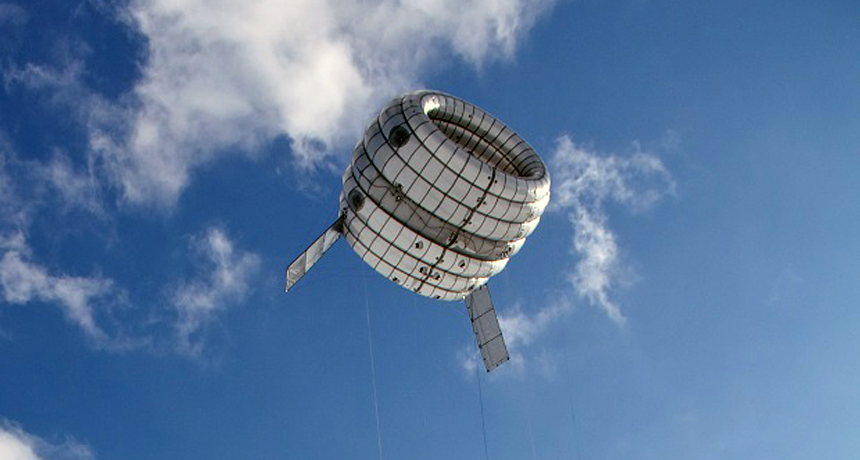
This special helium-filled blimp lets a wind turbine soar. Placing wind turbines high in the sky, where winds are stronger and steadier, could let them harness more energy than on the ground. VIDEO: Click here to see the turbine in action
Altaeros Energies
By Sid Perkins
For the year ending this past April, slightly more than 4 percent of U.S. electricity came from wind power. That may not sound like much, but it’s more than 20 times as much energy from wind as the nation produced in 2000. Wind power is booming, largely due to a search for energy from sources other than fossil fuels, such as petroleum and coal.
Much of today’s wind power comes from big “farms” that have many tall, modern windmills, called wind turbines. These machines have long shafts. In some designs, they can reach taller than a 10-story building. These shafts are topped by giant blades. These connect to a generator that converts the energy of their spinning motion into electricity.
But some people — even those very concerned about the effects of fossil fuels on the environment — have growing concerns about wind power. The turbine farms are taking up a growing fraction of the landscape. Plus, to tap the speedier winds found at higher altitudes, the blades have been growing longer and sitting atop ever-higher shafts. Together, critics say, these trends pose increasing threats to wildlife.
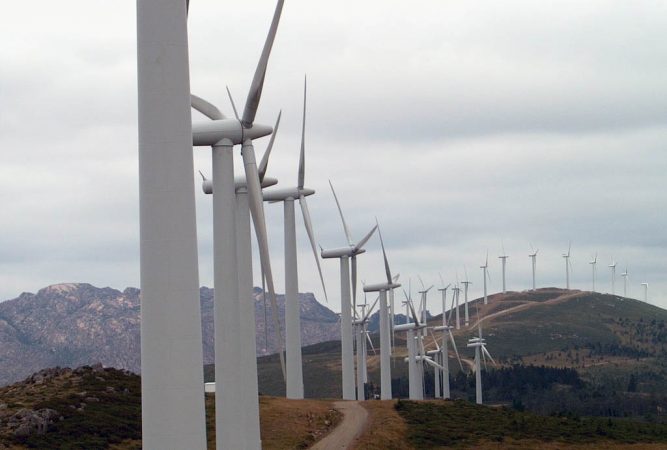
Other critics think that the forests of turbines are just plain ugly. And many people who live near wind farms complain about the whooshing noise made by the rapidly whirling blades.
Some engineers are now investigating a seemingly radical solution — one that might solve many of these problems. They’d like to take the earthbound wind turbines and fly them far above the ground. They could be held in place by kites or helium-filled blimps and connected to the ground by long tethers. High above — and possibly out of the flight paths of some birds and bats — they would be largely out of sight and too high for their noise to bother anyone.
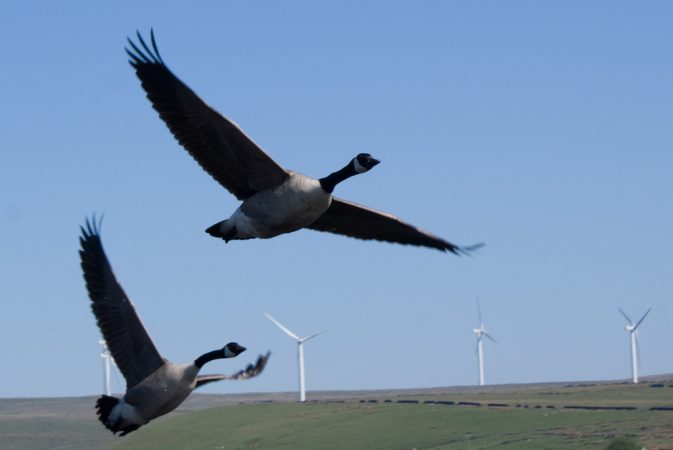
The air up there
Largely because of friction with Earth’s surface, winds tend to be slower at ground level than at high altitudes. That’s why engineers are building taller and taller wind turbines: The higher the blades reach, the more wind they can harvest for power.
Some of the strongest, steadiest winds on Earth are found in jet streams. These fast-flowing currents of air blow, for the most part, from west to east. They can be found in the mid-latitude regions of the Northern and Southern Hemispheres.
When scientists first came up with the idea of airborne wind power, some considered tapping into jet streams, says Cristina Archer. She’s a civil and environmental engineer at the University of Delaware in Newark. But to reach high-altitude jet streams, the tethers connecting the turbines to the ground would need to be several kilometers long. Not only would these cables be heavy, but also would pose safety hazards to aircraft carrying people, Archer notes.
So now, engineers are designing and testing wind-energy systems to fly at much lower altitudes. In U.S. airspace, these turbines would be lofted no higher than 600 meters (1,970 feet) off of the ground. Over international waters, where rules can be less strict, a somewhat higher flying altitude might be permitted, Archer says. But even at these relatively low altitudes, winds should be far stronger than they are at ground level. Moreover, winds well above Earth’s surface should be steadier and less turbulent.
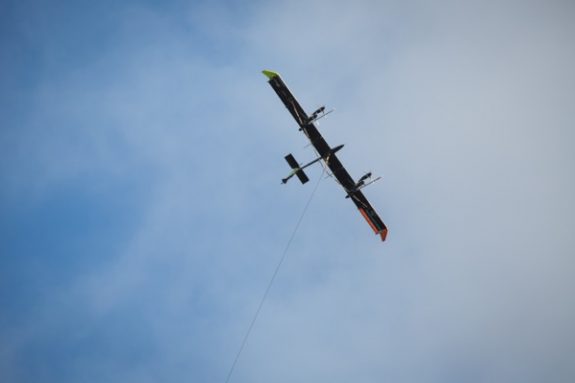
Recently, Archer and her teammates analyzed 21 years’ worth of weather data collected worldwide to find out where airborne wind energy might be practical at altitudes below 3 kilometers (about 9,800 feet). Winds are typically strongest in summer months. So they looked at weather data from January and July. Those are the peak summer months in the Southern and Northern Hemispheres, respectively.
The researchers found several regions where summer winds were suitable. They exceeded 36 kilometers per hour (about 22 miles per hour) at least 15 percent of the time. In some of those areas, the winds are far stronger at altitude than they are near ground level. If airborne wind turbines operated in all of those regions, Archer’s team concluded, they could make about three times more electricity than was consumed worldwide from all sources in 2012. The researchers reported their findings in the April issue of Renewable Energy.
But harnessing airborne wind energy in some of those places likely would not be practical, Archer admits. One area, for example, is off the shores of Somalia, a nation in eastern Africa. Others are near Greenland and the coast of Antarctica. Even if winds in these places are strong, she notes, they are extremely remote and any power generated there couldn’t be easily transported to a large, continental power grid. It could only be used locally.
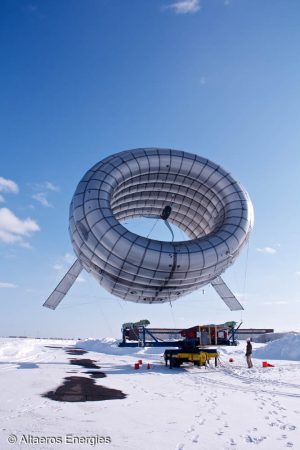
Many ways to tap wind power
Many places have plenty of wind available for harnessing that is just a few hundred meters up in the sky. The challenge lies in designing devices that can tap into that energy efficiently and reliably.
Fortunately, there are only four main ingredients needed for an airborne wind turbine, explains Christof Beaupoil. He works at a software company he co-founded more than a decade ago, but he trained as a mechanical engineer. (That’s an engineer who designs, builds or operates machines or mechanical systems.) Beaupoil has been interested in airborne wind energy for more than 20 years.
Last year, he spoke at a conference about the many different ways that engineers might design airborne wind turbines. Two types of components would remain similar to those in land-based turbines: the blades needed to intercept the wind and the generator used to convert the energy from those rotating blades into electrical power.
Two other components would be unique to airborne wind-power systems. One is a way to loft and hold the turbine at heights where the strong winds blow. The other is a way to transport electricity from the turbine to the ground, where it could be used directly or sent into the electric power grid.
Combining these four ingredients to efficiently extract energy from the high-altitude winds is the trick, says Beaupoil. “Fortunately, there are literally a million ways to do this.”
For instance, the blade-carrying portion of the turbine could be lifted by a kite or a helium-filled blimp. Or the turbine could hang from a helicopter-like platform or a glider-like vehicle with a solid fixed wing. Some turbines might be designed to always hover in the same spot, with the wind blowing past. Others might fly through the air in a circular or figure-8 path.
The system’s electrical generator could be built into the flying device or sit on the ground, near to where the tether anchors the turbine to the ground. There are advantages and disadvantages to each option, says Beaupoil. If the generator is airborne, that makes the turbine heavier and possibly more difficult to keep aloft. The tether in these systems also must conduct live electricity to the ground. That means the tether must be insulated to make it safe. If the generator instead remains on the ground, the wind energy has to be transferred mechanically to it via a series of belts, pulleys or rotating shafts. That could make the tether’s design quite challenging.
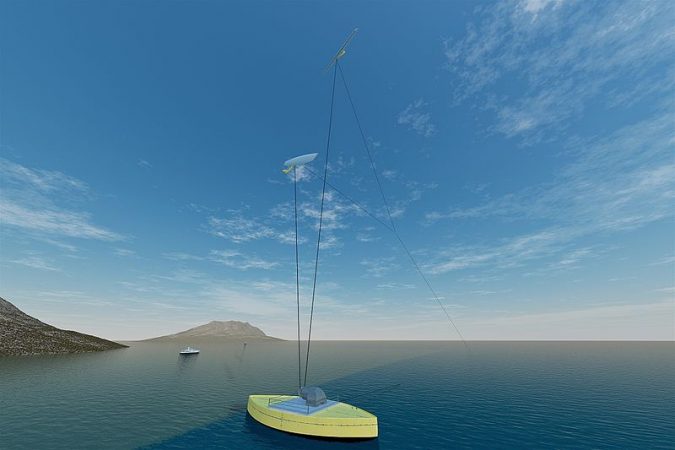
But the biggest challenges might be legal ones, Archer says.
Government agencies would have to approve cloud-based turbines. Right now, rules for airborne things other than conventional aircraft vary from country to country. In the United States, Archer notes, rules are somewhat strict about where and at what altitude something such as airborne wind turbines might be allowed. Some rules are imposed by local or state governments, but many are imposed by the Federal Aviation Administration. That’s the U.S. agency that regulates the nation’s airspace to keep it safe, among other duties. “I wonder if the FAA will ever allow turbines to fly at altitudes above 500 feet [about 150 meters],” Archer says.
Until such issues are resolved, airborne wind turbines might be grounded, at least in the United States. But if the government can draft rules that allow flying wind turbines, the amount of energy harvested from the wind might really soar.
Power words
blimp An airship that doesn’t have an internal framework or a keel. Most blimps, such as those often seen over sports stadiums, gain their lift by being filled with helium.
civil engineer An engineer who creates buildings, tunnels, water systems and other large projects that improve everyday life.
electricity A flow of charge, usually from the movement of negatively charged particles, called electrons.
engineer A person who uses science to solve problems. As a verb, to engineer means to design a device, material or process that will solve some problem or unmet need.
fixed wing The term for a type of aircraft whose wings generate lift without having to move. Most jets and passenger planes fall into this category.
fossil fuels Any fuel — such as coal, petroleum (crude oil) or natural gas — that has developed in the Earth over millions of years from the decayed remains of bacteria, plant or animals.
generator A device used to convert mechanical energy into electrical energy.
helium An inert gas that is the lightest member of the noble gas series. Helium can become a solid at -458 degrees Fahrenheit (-272 degrees Celsius).
jet stream A fast-flowing, high-altitude air current. On Earth, the major jet streams flow from west to east in the mid-latitude regions of the Northern and Southern Hemispheres.
kinetic energy The energy held by an object due to its being in motion. The amount of this energy contained will depend on both the mass (usually weight) of the object and its speed.
mechanical engineer Someone who uses physics and materials science to design, develop, build and test mechanical devices, including tools, engines and machines.
mid-latitudes That part of the globe that lies midway between Earth’s tropical and polar regions. Most people live in these temperate regions and most of the world’s food is produced here.
power grid The interconnected system of electricity lines that transport electrical power over long distances. In North America, this grid connects electrical generating stations and local communities throughout most of the continent.
renewable energy Energy from a source that is not depleted by use, such as hydropower (water), wind power or solar power.
software The mathematical instructions that direct a computer’s hardware, including its processor, to perform certain operations.
weather Conditions in the atmosphere at a localized place and a particular time. It is usually described in terms of particular features, such as air pressure, humidity, moisture, any precipitation (rain, snow or ice), temperature and wind speed. Weather constitutes the actual conditions that occur at any time and place. It’s different from climate, which is a description of the conditions that tend to occur in some general region during a particular month or season.
wind turbine A wind-powered device — similar to the type used to mill grain (windmills) long ago — used to generate electricity.
